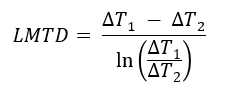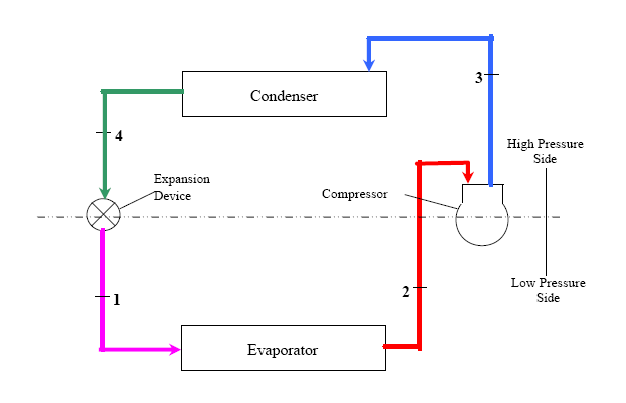Heat exchangers are equipment used for heat transfer from one medium to other. Different types of heat exchangers are widely used in process industries, where the two media are often process or utility fluids.
Selection of a particular type of heat exchanger depends on - the nature of the two fluid streams, their pressure, temperature, flow rates and required heat transfer rate. Therefore it is important to understand, how do heat exchangers work in order to make an informed decision about which heat exchanger can be used in a given situation.
Basic heat exchanger working principles
Heat exchanger facilitates heat transfer from one medium to another. Often these media are two process fluid streams such as - oil, water, steam, gas, air etc. In general, one fluid has to be significantly hotter than the other.
So, we have a hot and a cold fluid. And a heat exchanger enables the heat to flow from hot fluid to cold through a metallic wall.
Heat exchanger channels the flow of hot and cold streams through passages separated from each other by metal surface. Thanks to the high heat conductivity of the metal, heat flows from hot stream to the cold one. So the hot fluid exits the heat exchanger, a little colder. And cold stream goes out a little hotter.
That is why heat exchangers are widely used for heat up or cooling down a fluid stream in a processing plant.
Important parameters in heat exchanger design and operation
It is important to look at a few parameters in order to understand how do heat exchangers work. Also it is necessary to understand impact of these parameters on heat exchanger performance.
Nature of the hot and cold fluids
Chemical composition, purity, temperature and pressure of both the fluids has to be considered for how it will affect the metal wall of the exchanger.
Some fluids can cause corrosion and fouling, lowering the heat transfer efficiency of the exchanger. Therefore the heat exchanger metal and type has to be selected to ensure minimum fouling and easy maintenance. It is a standard practice to keep the dirty or corrosive fluid on the tube side of a shell and tube heat exchanger, since the inside walls of the tube bundle are easier to be cleaned mechanically.
Flowrate, temperature difference, surface area
The overall heat transfer rate required in a heat transfer operation is calculated using the following equation -
where, Q = overall heat transfer rate
WTube and WShell are mass flow rates for tube side and shell side respectively
CpT and CpS are specific heat capacities for tube side and shell side respectively
ΔTTube is the temperature difference in tube side (between tube side inlet/outlet)
ΔTShell is the temperature difference in shell side (between shell side inlet/outlet)
So, the overall heat transfer rate required to bring about the required temperature change in a fluid (from inlet to outlet), is proportional to the flowrate, specific heat and the ΔT itself.
Further, this heat transfer rate requirement gives us the overall heat transfer area required to enable the desired heat transfer operation.
where, Q = overall heat transfer rate
U = Overall heat transfer coefficient
AOverall = Overall heat transfer surface ares
LMTD = Logarithmic Mean Temperature Difference
Where,
ΔT1 → the temperature difference between hot and cold fluids at one end of the heat exchanger
ΔT2 → the temperature difference between hot and cold fluids at the other end of the heat exchanger
These equations give us the basic framework to design a heat exchanger equipment. Usually, heat exchanger design is a very open ended problem and you may arrive at different solutions with different approaches to the problem.
Heat exchanger design: an open ended problem
Consider following examples -
- If you have a large requirement of heat transfer area, you may look for a compact heat exchanger design. A plate and frame exchanger will give you a large heat transfer area, with a smaller footprint.
- On the other hand, you may decide to use a different utility to increase the LMTD and decrease the requirement of heat transfer area.
Depending on your situation, you may go for a certain type of exchanger or change the process / operating conditions to solve the same problem.
What approach you take will determine how effective the final solution is. And knowing how do heat exchangers work well, will enable you to take the best approach.







